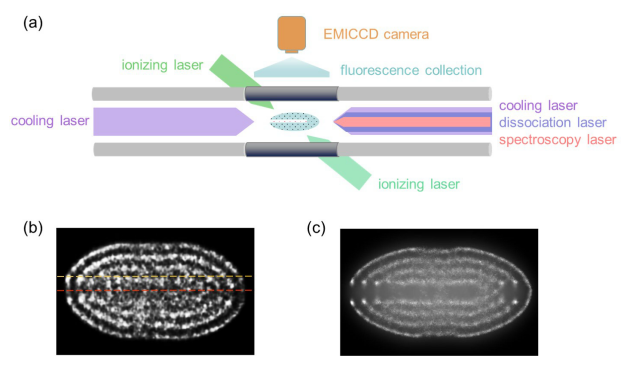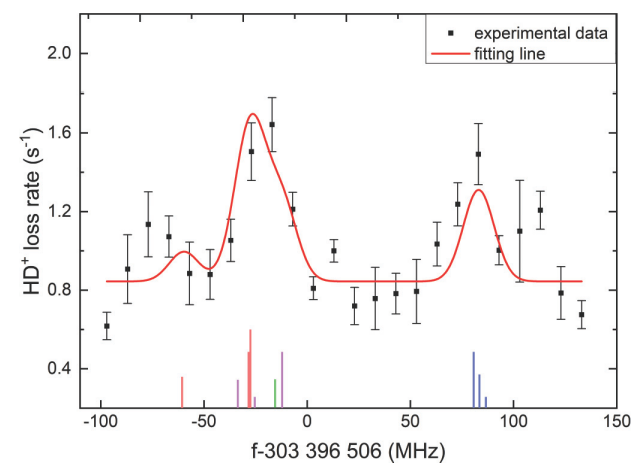
A research team from the Innovation Academy for Precision Measurement Science and Technology (APM) of the Chinese Academy of Sciences has made significant progress in precisely measuring the vibrational-rotational spectra of hydrogen molecular ions (HD⁺).
The researchers prepared a Be⁺-HD⁺ two-component ion Coulomb crystal at millikelvin temperatures in a linear ion trap. They developed innovative quantum state preparation and spatially resolved fluorescence detection techniques and used these to measure the high-resolution vibrational-rotational transition spectra of HD⁺ molecular ions.
Their findings were published in Physical Review A.
HD⁺ is the simplest heteronuclear molecular ion, composed of one proton, one deuteron, and one electron. Its vibrational-rotational transition energies can be precisely calculated, making it an ideal system for testing quantum electrodynamics (QED) theory and determining fundamental physical constants, such as the proton-electron mass ratio.
To minimize the effects of Doppler broadening on their measurements, the researchers employed laser-cooled beryllium ions to cool the HD⁺ ions, reducing their temperature to 18 millikelvins (mK). To address the low population of HD⁺ molecules in the vibrational-rotational ground state (v = 0, N = 0), they employed the resonance-enhanced threshold photoionization (RETPI) technique to prepare HD⁺ ions precisely in the vibrational-rotational ground state. This technique achieved an initial quantum state population degree of 93%.
Compared with traditional cryogenic cooling or optical pumping methods, this technique significantly increases the ground-state population rate, laying a solid foundation for subsequent high-resolution transition detection.
Additionally, in the two-component ion crystal, HD⁺ ions appear as non-fluorescent "dark ions", and the change in the number of HD⁺ ions during resonant dissociation is the key to spectral measurement. To address this issue, the researchers developed a spatially resolved fluorescence collection technique using a high-sensitivity, electron-multiplying intensified CCD (EMICCD) camera. This setup enabled the real-time acquisition of ion crystal images and the real-time, non-destructive measurement of HD⁺ ion numbers.
Using these innovative methods, the researchers measured, for the first time, the vibrational-rotational transition spectrum of HD⁺ ions (v,N):(0,0)→(6,1). The transition frequency value is 303,396,506.7(20) MHz, with a relative accuracy reaching parts per billion (ppb), which is consistent with the current most precise QED theoretical prediction. Combining theoretical calculations, they further deduced that the value of the proton-electron mass ratio (μpe) is 1836.152648(45). This value aligns with the 2022 recommended value from the International Council for Science: Committee on Data for Science and Technology.
This work was supported by the National Key Research and Development Program of China and the National Natural Science Foundation of China.

Synergistically cooled Be⁺-HD⁺ ion crystal and molecular dynamics simulation (Image by APM)

Vibrational-rotational transition spectrum with resolved hyperfine structure of HD⁺ (Image by APM)

86-10-68597521 (day)
86-10-68597289 (night)

52 Sanlihe Rd., Xicheng District,
Beijing, China (100864)

